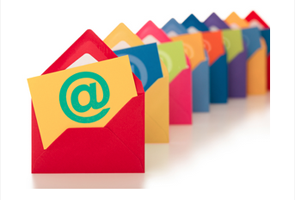There’s writing emails, and then there’s writing email sequences.
So how do you do that and still get click-throughs and conversions? You start by forgetting about writing emails and thinking in terms of email sequences.
“What’s the difference between writing an email and writing an email sequence?”
It all comes down to the concept of storytelling. You’re telling the story of a person in pain, discomfort, or distress that can only be saved by hanging on your every word and doing whatever you tell him or her to do (read: buy whatever you tell him or her to buy) to alleviate that pain/discomfort/distress. It’s not impossible to do this with one email, but it is much more effective in smaller bites.
“How long should my email sequence be?”
As head of a growing copywriting company, I can tell you this: That question is the first one all of our clients ask. Now, I could go for the big payday and tell everyone that they need a minimum of 50 messages (which wouldn’t be far off from the truth), but the simple fact of the matter is that the length of the sequence depends on a few things.
For starters, are you selling a single product or service, or do you have a parade of Clickbank products in a specific niche that you want to target? If the whole point of your campaign is to sell one e-book, you should be able to nail that down in three to five messages, tops. If you have a long list of products to promote, you want to be able to draw the story out more and leave room to expand on it.
Single Product and Product Launch Sequences
The most effective launch sequences don’t sell anything for the first couple of days. They stay focused on the reader, they address the problem that the product solves, and they promise that a solution will be forthcoming. The message gets more specific on the third or fourth day and wraps things up neatly with the offer and possibly a bonus for acting quickly.
Ongoing Campaigns
If you have a lot of products to sell in the same niche, you want to be able to keep the story going longer. That’s not to say that you necessarily need to draw out the pain angle, but you always keep it in front of the reader. They have a problem; you have the solution.
Similar products can address different issues. For example, if you are marketing vitamins or supplements, there is an endless number of health-related issues that these products address, and some are very common in nature. Find a common issue based on research in your niche, and talk about it.
Tell the readers what kind of hassle it is dealing with the problem. Make them acknowledge that it’s a source of discomfort, then give them the solution. You can do this over and over again as long as you remain anchored to a central storyline.
Cart Abandons and Exit Sequences
If you run an e-commerce site, cart abandons and exit sequences can be effective ways of recapturing leads and making sales. One of the most effective methods for a sequence like this is the Four Day Cash Machine: Four days of very simple messages letting readers know that you’ve saved their cart and that they can check out with one click. You can also offer a discount or a bonus to get them back and set a deadline to claim it. It’s simple, and it’s effective. It can also be tailored to any number of products or services.
Email Sequence Blueprint for Success
Regardless of the type of sequence you’re writing, being certain to include these key elements will drastically increase click-throughs and conversions.
1. Start with a strong subject line. Be brief (75 characters max), don’t type in all-CAPS, and put questions in the reader’s mind. Here are a few examples:
“Can you believe she said that?”
“When I heard this, it blew my mind”
“Yes, it’s completely possible”
2. Hit the pain points right away. Lead with the problem and dwell on it. Discuss every way that it manifests difficulty in the life of the reader.
3. Promise a solution, but don’t give it away immediately. Just a mention that a solution is coming will keep most people reading.
4. Use FIVE “you” statements to every “I” “me” or “we.” Keep the readers thinking about themselves, not you. Five isn’t necessarily the magic number, but it’s an excellent gauge.
“You’ve tried to shake the sugar habit, but you find it difficult to stay away from sweets. I get that. You’re not alone. Your problem is very common, and if you’ve managed to stay away from sugar even for just one day, you have more willpower than you realize.”
5. Remind the user that you hold the solution. End each message in the sequence with a ray of hope.
6. Make good use of your P.S. This is where you can jab the pain points again or assure the readers that they will be one step closer to their solution if they just open your next email.
Keeping these points in mind as you write your next sequence will help you develop a more effective style to your emails. You will also notice that you have higher open rates, click-throughs, and conversions in a short period of time.
